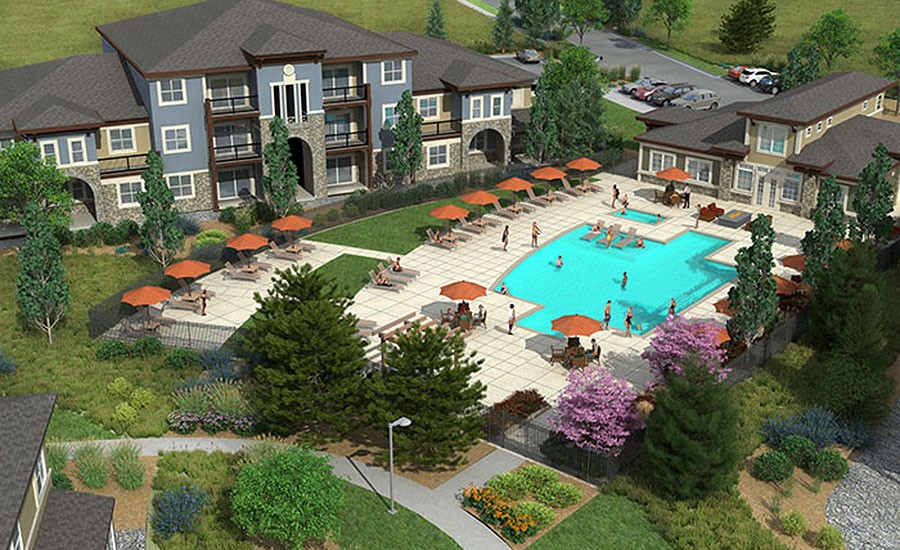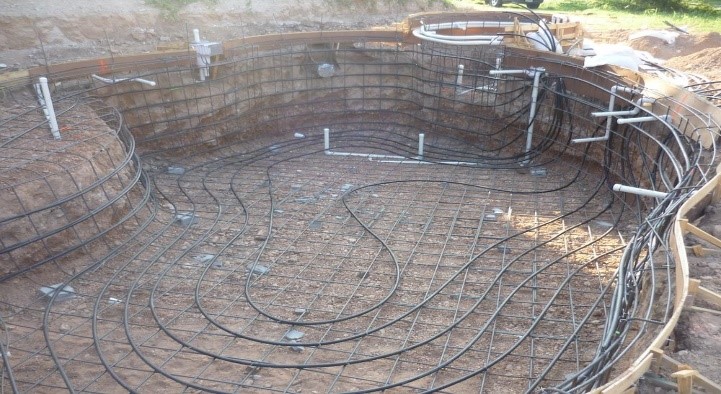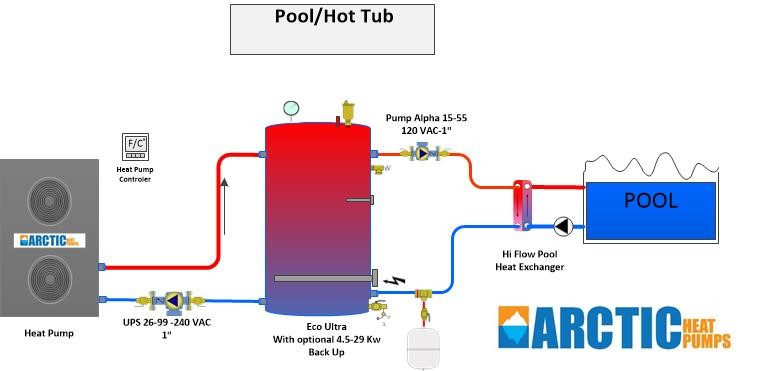Geothermal Heating for Swimming Pools
Swimming pools are great investment for families. They are a great way to increase the value of your outdoor space and increase the popularity with your neighbors. However, there is a down side to pool ownership…. Pools cost money to maintain! While there are chemical costs and cleaning costs the largest cost is often the heating cost. Depending on where you are located a pool can easily cost $500 to heat per month. Therefore, most pool owners only open the pool season when the outdoor temperature is hot enough to help save on these heating cost.

Traditionally pool have been heated in 4 ways:
By far the cheapest means of heating a pool is by investing in a solar pool heater. However, a solar pool heater only works very well when the sun is shining. Electricity, gas and oil are all costly to heat a pool but traditionally the most common ways used for pool heating.
What about Geothermal to heat a swimming pool? This is often overlooked when installing a new pool as the customer is already over-whelmed by the capital costs so most choose the least expensive and go with an electric or gas heater. But geothermal is an ideal means to heat the pool, and at 70% of the cost of fossil fuels it does not take long to payback the initial investment. More importantly the investment into a geothermal pool heater will increase the overall value of your pool project as the operating cost are now reduced.
Laying geothermal loops during pool construction

How does it work? - A geothermal swimming pool heating system is designed very similar to any water to water heat pump system. The energy from the ground is removed by the one side of the ground loop and through the refrigeration cycle it is transferred to the Freon through the evaporator and then the heat from the hot compressed gas is transferred to a water to water heat exchanger (condenser) on the other end of the cycle. The hot gas heats up the water to about 120-140 F. However most geothermal water to water heat pumps are not designed to have chlorinated or salt water pool water run directly through their condenser heat exchanger as the chlorine can damage this heat exchanger. So instead we use a buffer tank that stores the energy and uses a second external heat exchanger to draw off the energy to the pool. In this way the pool water never encounters the geothermal heat pump. The buffer tank also reduces short cycling of the compressor motor.
Winter for home heating - the best part of the investment in a pool geothermal water heater is that if you close your pool in the winter you can continue to use the cost saving of heat energy production to heat your house. Radiant floor heating or an air handler are very cost effective ways of distributing the heat energy to your house in the winter.
If your project is small or the land is limited then geothermal pool heater may not be practical. In this case there is always an air to water heat pump option. Cold weather heat pumps for pools such as the Arctic Heat Pump can work down to 20 F and still deliver cost saving heat energy harvested by the air.




